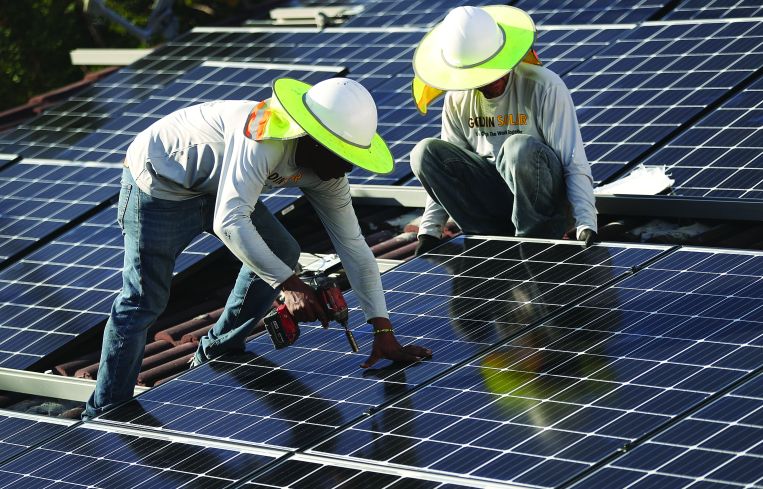Welcome to New York City, C-PACE
Sustainability doesn't have to be a zero-sum game.

New York City is finally picking up the pace on, well, PACE.
Commercial Property Assessed Clean Energy financing, or C-PACE, is a form of financing that enables property owners to obtain funding in exchange for certain energy-efficient building improvements. New York State permitted C-PACE for New York City in March, but withdrew the permission less than a month later.
However, with the release of the long-awaited revised C-PACE program guidelines on Sept. 27, the program is again open for business in Gotham. Just not for every type of project.
While C-PACE program documents required for loan closings on renovation projects for existing buildings are now available, new construction and major renovation projects continue to remain ineligible, according to the NYC PACE website.
“New construction and ground lease tenants are still very much cut out from PACE loans and still remain sitting on the sidelines,” said YuhTyng Patka, a partner at Duval & Stachenfeld. Patka is co-chair of the firm’s NYC Climate Mobilization Act Task Force and PACE Financing Practice, and chair of the NYC Real Estate Tax and Incentives Practice Group.
Eligible property types covered under the available documents include commercial, industrial and office; properties owned by tax-exempt organizations; multifamily residential properties; and residential condominium units currently owned by a commercial entity.
For the last several quarters, New York City has pressed pause on PACE as it overhauled the program’s implementation and documentation. Some owners who couldn’t wait for New York City to relaunch the program have been forced in the meantime to find funding elsewhere to replace the capital stack hole that PACE financing would have filled, according to Patka.
But the relaunch of the tweaked C-PACE program is happening at a time when the financing is more needed than ever in New York City — for multiple reasons.
“Local Law 97 is five quarters away,” said Laura Rapaport, founder of North Bridge, a New York City-based C-PACE lender. “From a renovation standpoint, if you’ve got work to do and haven’t started the work, you’re paying the fine.”
The law limits greenhouse gas emissions from larger buildings starting in 2024, with a goal of helping New York City reduce greenhouse gas emissions from buildings by 40 percent by the year 2030.
Then, C-PACE can also help investors fill capital stacks while lenders retrench amid the current market choppiness.
“With all the volatility, lenders’ pricing getting blown out and the lack of capital, not only is the pricing more expensive, but there are fewer proceeds,” Rapaport said. “People don’t realize that they can access [C-PACE] as part of a refinance, or for rescue capital.”
It’s also a hedge against higher rates for other financings.
“If you’re a developer, and you’re putting together your capital stack for a project, construction lenders will only loan so much, and then you have to fill the gap with other forms of financing, whether it’s equity or more expensive debt, like a mezzanine loan; the interest rates are 9 to 11 percent,” Patka said. “Whereas PACE loans traditionally are a fraction of that. So if you replace the mezzanine with PACE, you automatically reduce your overall cost of capital for projects.”
At the end of the day, PACE is designed for a meaningful cause, which is to allow property owners to make energy-efficient upgrades.
“Sustainability doesn’t have to be a zero-sum game,” said Rapaport. “If you’re doing a net-zero project or Passive House, that’s amazing, but you still can access part of this capital even if you’re not. You can take baby steps with this as well.”



